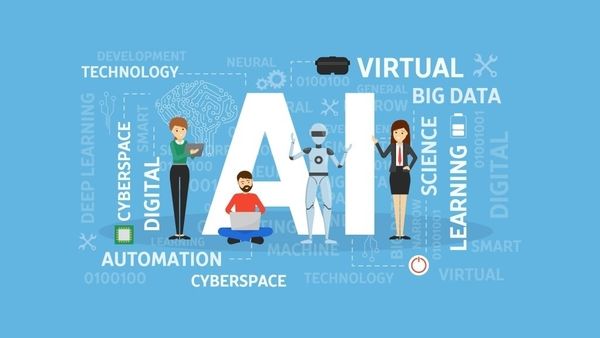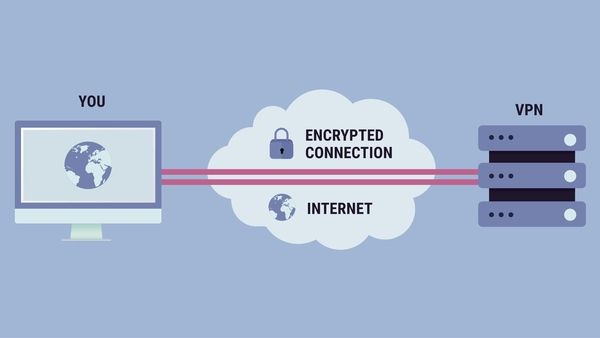
How AI Will Sort through the Mess That Is Big Data
May 7, 2019
VPNs and Data Centers: A Match Made in Heaven?
May 9, 2019Serverless computing is slowly but surely getting the attention of web developers. This type of programming is completely changing the way applications are constructed, distributed, and run. You can build and use apps without thinking about servers.
However, what is the forecasts for the future? Is serverless computing here to stay?
What Is Serverless Computing?
Serverless computing refers to a model when the cloud provider runs the server.
As you can see, despite its name, the servers still exist. The model doesn’t get rid of the servers. The software exists in the public cloud.
You can build them for almost any type of backend service or application.
What it does is that it eliminates some tasks such as maintenance of operating system, capacity and cluster provisioning, and patching.

There are two types of serverless architecture:
- Backend as a Service (BaaS) – third-party services
- Function as Service (FaaS) – custom code that’s run in ephemeral containers
When it comes to the providers of these services, there are the “Big Three” which rule the market:
- Amazon Web Service (AWS) Lambda
- Google Cloud Functions
- Microsoft Azure Functions
The Benefits of Serverless Computing
If we are talking about the leaders in this area, it is Amazon. The Register claims that Amazon has 70% market share in serverless computing with their AWS (Amazon Web Services) Lambda.
This leading company clearly states four benefits of serverless computing:
- Get to market faster
- Spend more time on innovation
- Increase developer productivity
- No operational complexity
There are also some other advantages which should be mentioned such as:
- Lower cost – You get to pay for the duration of execution, not by the server unit
- No upfront payments – Since you are paying for the running code there is no upfront investment
- Simplified backend code – There are pure functions which perform a single purpose independently
- Automated high availability – They provide built-in availability by default
- Improved security – Developers need to use code constructs that are within the serverless context, so they have to produce code with all security protocols
Serverless Computing in the Act
For better understanding and direct insight into the serverless computing, take a look at how some of the most influential companies are getting most out of this system.
- No surprise here, but Coca Cola has taken advantage of serverless computing in many ways. For example, they have built a serverless solution for publishing nutrition information to their food service partners using Lambda, Step Functions, and API Gateway.
- A life science software company, Benchling, created a technique that researchers use to modify parts of a genome with extreme precision using serverless architecture.
- Marc Jacobs turned to the cloud-based AP invoice automation solution MediusFlow. They use it to automate its accounts payable workflow and process data on the Azure platform.
- Nordstrom switched from data-driven applications to event-driven applications. They have created an open-source proof-of-concept Serverless architecture retail store called Hello Retail.
- A leading global consumer robot company called iRobot is building the next generation of connected devices for the smart home using a serverless architecture.
- Plexure, a mobile engagement software, also uses serverless computing. Richard Stinear, Head of Engineering at Plexure, explains, “Some of our bigger customers have 35 million consumers using their apps, with up to 7,000 requests per second running through our APIs. We need the power of Azure to support that kind of volume.”
All these successful companies have opted for serverless computing for a reason. It makes their work less complicated and more efficient. Of course, this doesn’t mean that you have to be a mogul in your industry to use this system. It would be best if you adapted it to your needs.
What Can We Expect from Serverless Computing?
Technology such as this can confront many challenges, but it is certainly expected to grow in the next few years. As people become more familiar with this model and its benefits, they will become more open to using serverless computing.
As it was already mentioned, serverless computing is also known as Functions as a Service (FaaS) or “event-based computing.” The Function as a Service (FaaS) market size is estimated to grow from $1.88 billion in 2016 to $7.72 billion by 2021, at a Compound Annual Growth Rate (CAGR) of 32.7% owing to the growing number of users adopting FaaS due to their easy deployment and execution ability.
To introduce serverless computing and familiarize people with it, hundreds of serverless conferences and workshops have been held over the last couple of years.
What needs to be taken into consideration is that there are still many details that need to be discussed and resolved when it comes to transitioning companies from traditional solution to serverless.
Here are some of the weaknesses to consider:
- Monitoring invoked functions
- The security of third-party dependencies
- The cost of adding another integrated cloud solution
- Vendor lock-in which makes migration to another service tough
- Implementation drawbacks
- Architectural complexity
However, the benefits of cloud computing are still auspicious.
Considering that 69% of IT leaders identified “process automation and transformation” as the primary focus of their digital agendas, according to the 2018 Deloitte global CIO survey, we can expect to see much more of serverless computing.
Conclusion
Serverless computing goes even beyond cloud computing. It is one step ahead. That is why many app developers and business are already making the most out of the serverless model.
It can even change the way you do your business and enable it to be smarter and faster and reduce operational costs at the same time. One is sure; serverless computing is promising to change the software industry as we know it.

